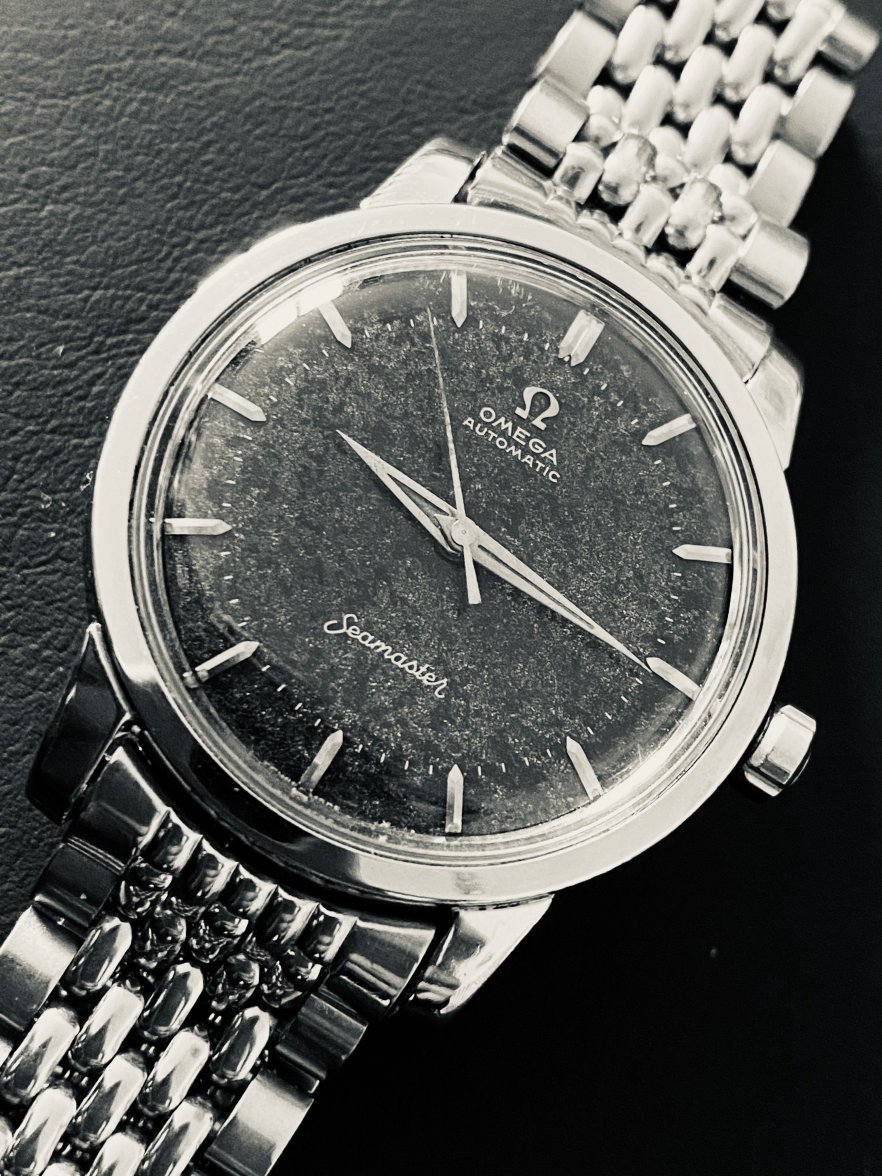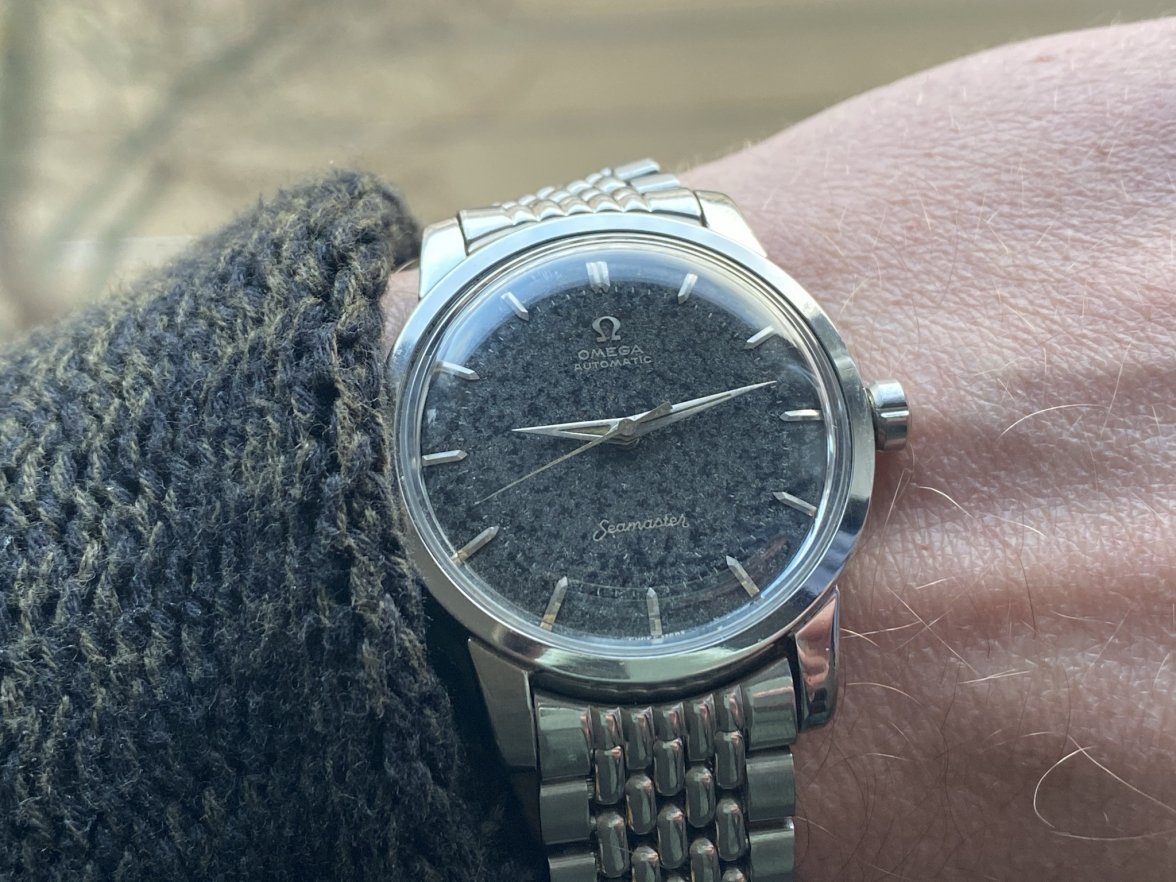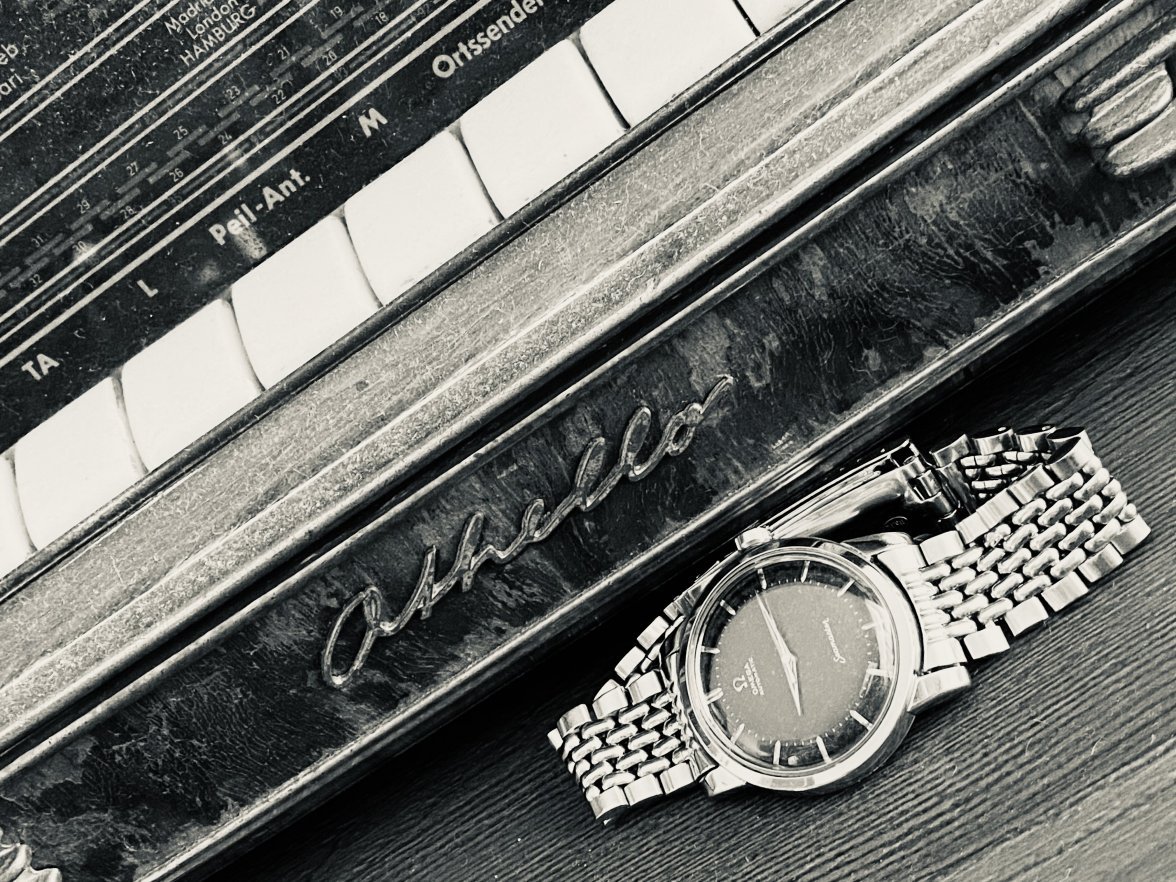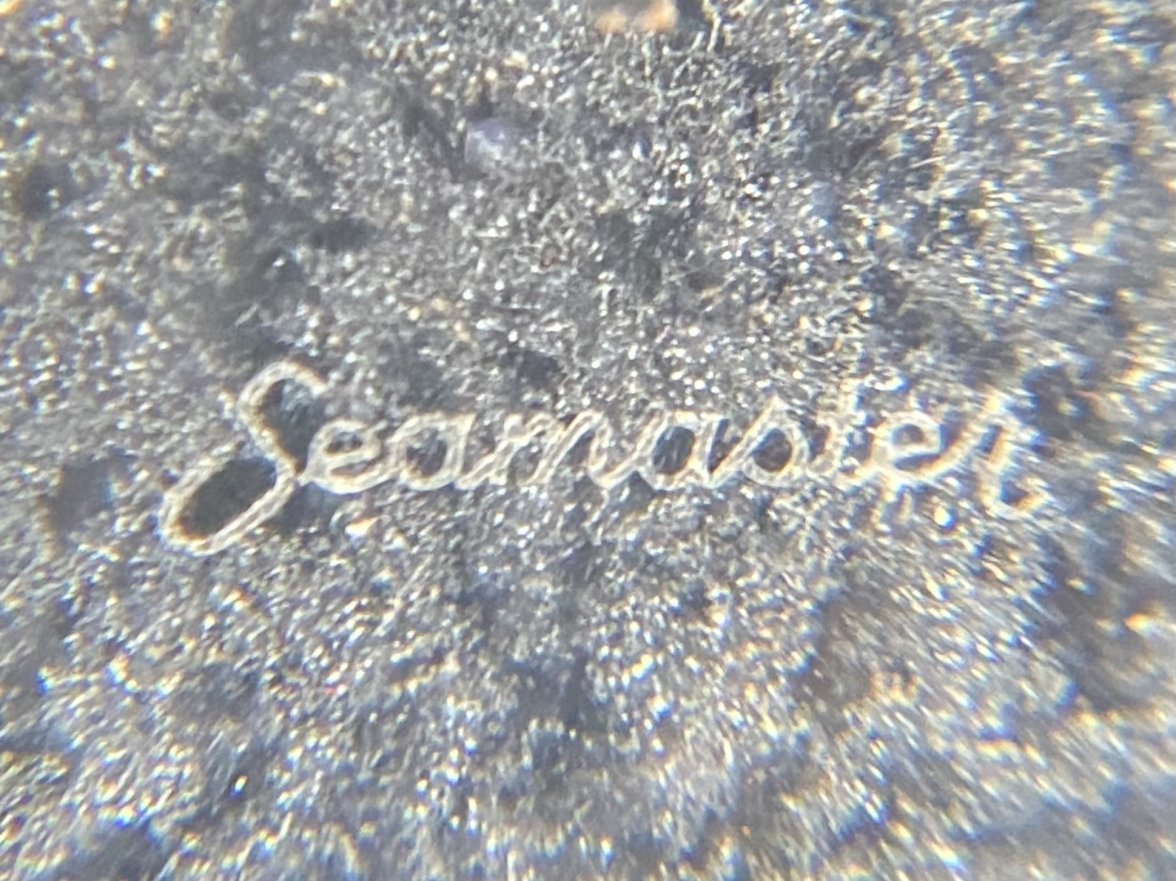MtV
·Good evening everybody,
I’m full of joy over my latest acquisition and thought, why not share the passion. After all, that’s what this place is about. 😀
Since I first saw a watch with what some might describe as “stardust”-patina - even though I’m not exactly a fan of those euphemisms - I’ve been in love with it. I do appreciate a dial that survived decades without any traces of its age like all of us, but there’s something about certain kinds of aging that just speaks to me.
Also always high on the want-list were black dials. The attractiveness of the rare surely fueled this desire even further, and finding a correct and unrestored black dial is definitely not an easy task among the amount of refinished ones that we so often find in threads asking for evaluations. I’ve done it myself and was disappointed (and relieved) at times.
A third factor that pushes vintage watches up my list is size. I’m over 2m tall - that’s 6ft9 for those among us applying slightly weird measuring units 😁 - and while my wrist does still work with the common 34mm of my beloved 50s Omegas, the difference in wrist presence a mere 2mm make never fails to blow me away.
A lengthy introduction, but I hope it serves as an appropriate explanation why I‘m so happy about this one, combining all three points mentioned above:
It’s a Seamaster 2856-2857. And boy, is it a looker. I’ve recently decided to reduce my collection a little and wear the watches I cherish the most more regularly. Happy that some of those that had to go quickly found loving new homes in the OF community, but selling them did hurt a little bit. This one feels all the more like a beautiful reward for myself.
Many of you will have seen this before, as I believe it has an owner history in this very forum that goes back a couple of years. I’m very thankful to the previous owner for having passed it on to me and this now fills a very special place in my small collection.
Due to the glossy plexi, the patina isn’t always visible. At a slight angle, with a lot of light and from a bit of a distance, it sometimes appears just plain black, or possibly dark grey:
But then the sun goes down, and in that short period of time everything is illuminated in this yellow light, causing the otherwise completely colorless Seamaster to sparkle wonderfully in a golden tone.
Before I lose myself completely in small, lovely details, like the Omega-logo that’s embossed in the back of one of the lugs, may I, just for a second, point to the caseback:
That, to me, is the icing on the cake. The large hippocampus is worthy of that watch and I do wish there were more examples that used it, not just the few that were produced in the right years.
Finally, I couldn’t help but look at the dial with magnifying glasses and thought I’d share the pictures. I understand that, leaving all romantic emotions aside, patina is nothing else but damage that appears attractive to some. Here’s some proof of that:
I wonder how long it took to look like it does now. How far progressed was the patina, let’s say, in the 80s? And how will it look in a decade or two? I have every intention of finding out.
I’m full of joy over my latest acquisition and thought, why not share the passion. After all, that’s what this place is about. 😀
Since I first saw a watch with what some might describe as “stardust”-patina - even though I’m not exactly a fan of those euphemisms - I’ve been in love with it. I do appreciate a dial that survived decades without any traces of its age like all of us, but there’s something about certain kinds of aging that just speaks to me.
Also always high on the want-list were black dials. The attractiveness of the rare surely fueled this desire even further, and finding a correct and unrestored black dial is definitely not an easy task among the amount of refinished ones that we so often find in threads asking for evaluations. I’ve done it myself and was disappointed (and relieved) at times.
A third factor that pushes vintage watches up my list is size. I’m over 2m tall - that’s 6ft9 for those among us applying slightly weird measuring units 😁 - and while my wrist does still work with the common 34mm of my beloved 50s Omegas, the difference in wrist presence a mere 2mm make never fails to blow me away.
A lengthy introduction, but I hope it serves as an appropriate explanation why I‘m so happy about this one, combining all three points mentioned above:
It’s a Seamaster 2856-2857. And boy, is it a looker. I’ve recently decided to reduce my collection a little and wear the watches I cherish the most more regularly. Happy that some of those that had to go quickly found loving new homes in the OF community, but selling them did hurt a little bit. This one feels all the more like a beautiful reward for myself.
Many of you will have seen this before, as I believe it has an owner history in this very forum that goes back a couple of years. I’m very thankful to the previous owner for having passed it on to me and this now fills a very special place in my small collection.
Due to the glossy plexi, the patina isn’t always visible. At a slight angle, with a lot of light and from a bit of a distance, it sometimes appears just plain black, or possibly dark grey:
But then the sun goes down, and in that short period of time everything is illuminated in this yellow light, causing the otherwise completely colorless Seamaster to sparkle wonderfully in a golden tone.
Before I lose myself completely in small, lovely details, like the Omega-logo that’s embossed in the back of one of the lugs, may I, just for a second, point to the caseback:
That, to me, is the icing on the cake. The large hippocampus is worthy of that watch and I do wish there were more examples that used it, not just the few that were produced in the right years.
Finally, I couldn’t help but look at the dial with magnifying glasses and thought I’d share the pictures. I understand that, leaving all romantic emotions aside, patina is nothing else but damage that appears attractive to some. Here’s some proof of that:
I wonder how long it took to look like it does now. How far progressed was the patina, let’s say, in the 80s? And how will it look in a decade or two? I have every intention of finding out.
Edited:







